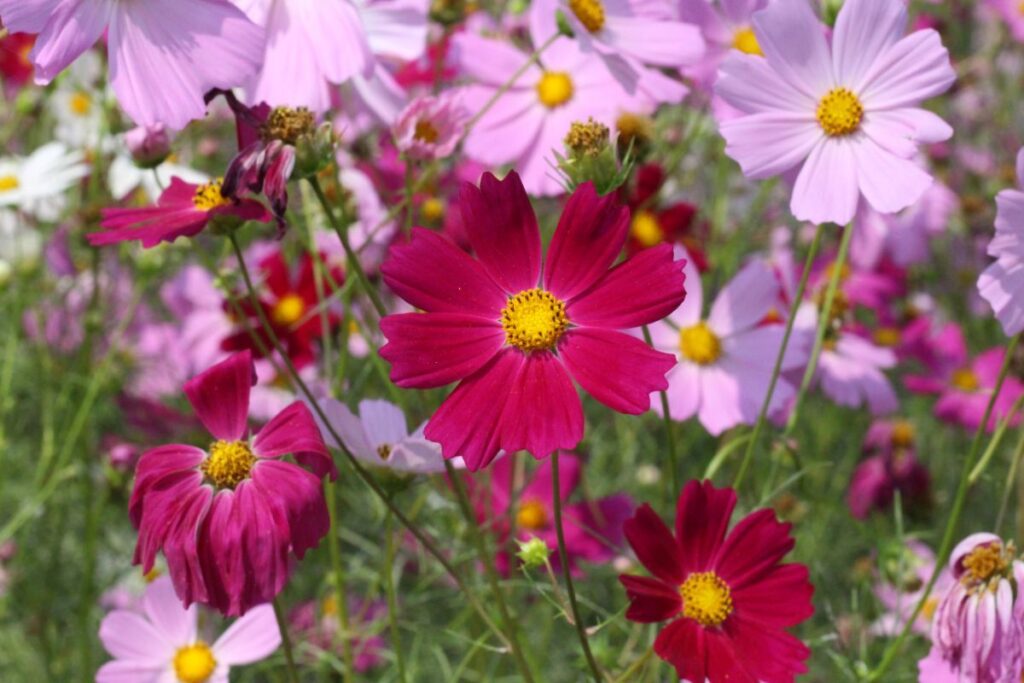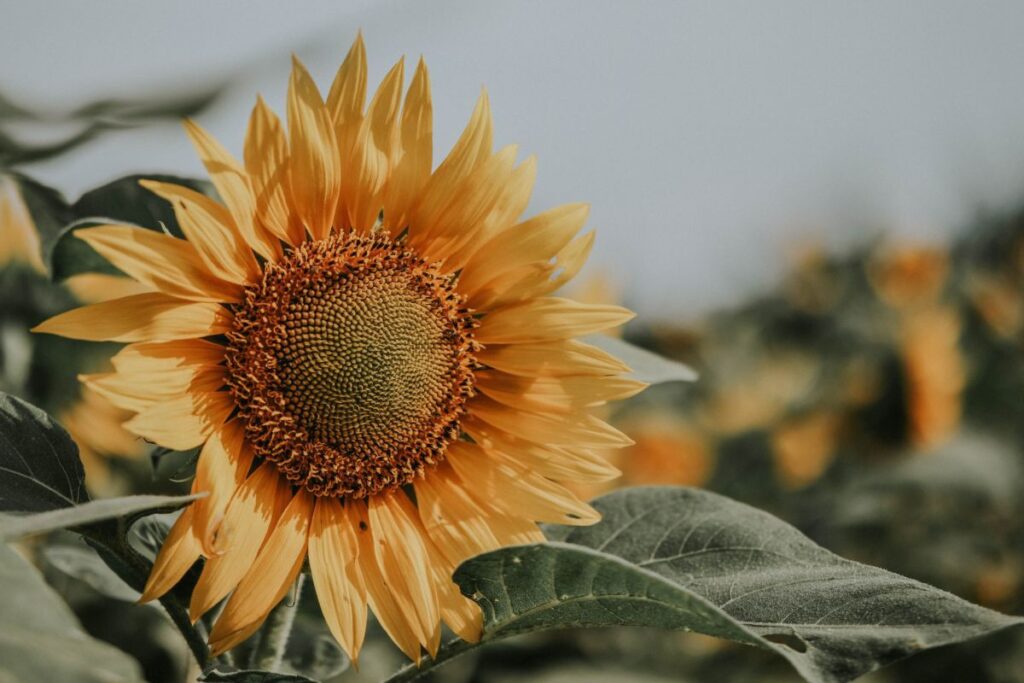Zinnias bring beauty and fragrance for just one growing season. But there are many perennials that stay with you through thick and thin and make your home garden blossom.
I’m a huge fan of zinnias, and I love growing them in my garden. Sadly, they are annual plants and die down once their single growing season ends. But I found out that many perennials look like them. The cosmos is one example. Dahlias, coreopsis, and sunflowers also look pretty much the same.
In today’s article, I’ll tell you about:
- 9 perennials that look like zinnias
- What are the differences between zinnias and their lookalike perennials?
1. Cosmos

When I first saw the Cosmos, I was very surprised to see them because they looked a lot like Zinnias.
Both of them are very popular among gardeners mainly due to their beauty, and they can grow them in plenty of gorgeous colors.
I personally love Cosmos. Why? Well, they’re like a welcome sign for butterflies and other pollinators.
Now, here’s where they differ from Zinnias a bit. They are often taller and slimmer than zinnias. Their leaves are more feathery and spread out (and, of course, they are perennials).
2. Dahlias
Dahlias are breathtaking perennials and are like cousins to the cosmos.
Let’s talk about their looks! Oh my god, they are simply amazing and are never shy to show off their big and fancy flowers.
Like Cosmos, they can grow in many colors (white, yellow, pink, red, you name it).
I also noticed that Dahlias loves attracting bees and butterflies (like Zinnias). The good news is the deer stay far away from them. So, you don’t have to worry about them ending up in the stomach of a herbivore.
I found another difference: Dahlias take it up a notch with more petals than zinnias.
3. Coreopsis
When you look at Zinnias and Coreopsis at the same time, I bet you’ll not be able to tell a single difference! They both have these big, colorful petals and a bushy way of growing.
If you double-check these flowers and spend some time glancing at them, only then you’ll notice that Zinnias have shorter stems. Also, their leaves are more deeply cut.
Coreopsis, on the other hand, are a bit taller, and their leaves are uneven. These perennials could prove to be the best alternative for you if you’re missing your zinnias in the off-season.
4. Sunflowers
Do you know that sunflowers are often mistaken for zinnias? Yes, that’s true! It also explains how much they both look like each other. People also say that they are annuals (just like zinnias), but they aren’t.
Their growing season is quite impressive, and they continue to bloom even in frost.
Both sunflowers and zinnias are bright and full of colors. They attract buzzing bees and other pollinators, which makes your garden a lively and vibrant place.
But if I could tell you one difference between them, then that would be the size. Sunflowers are like the skyscrapers of the garden. Their blooms are larger compared to Zinnias.
On a side note, sunflowers are packed with antioxidants and Vitamins A, B, and C.

5. Marigolds
Marigolds look a lot like zinnias (much like two long-lost siblings). They both have colorful petals and similar shapes. You’ll mostly see them in yellow or orange colors, often with a touch of purple at the base.
But here’s the thing: Marigolds can handle the summer heat better than Zinnias.
And guess what? They smell strong. This means bugs like mosquitoes can no longer disturb you and your surroundings.
That’s not all! Marigolds improve the fertility of the soil. So, as a gardener, this perennial could be your top pick to make the land a perfect spot for growing other plants.
6. Chrysanthemums
Chrysanthemums, or “mums” (for short), are the superstars of the fall season. Interestingly, they share a family resemblance with zinnias.
Both flowers have a disk-shaped center surrounded by petals. This creates a charming floral display.
Wait here! If you pay a bit of attention, you’ll notice a very small difference in petal shape. Zinnia’s petals are more pointed, while mum’s petals take on a more rounded form.
Talking about mums, they’re ageless wonders in the garden. They’re perennials, which means they’ll stick around for more than two years. With good care, they can even bloom happily for up to ten years.
And the best part? Growing mums (just like Zinnias) is a breeze. Think of them like a low-maintenance perennial in your garden crew.
7. Bush Daisies
Bush daisies (also known as Olearia ramulosa) are small shrubs from New Zealand. They have tiny, oval-shaped leaves and make white flowers. Sometimes, people get them mixed up with Zinnias because they look very similar.
But guess what? They are somewhat different in other aspects (besides looks).
Bush daisies not only have flowers but also little black fruits (that look like tiny berries).
Zinnias don’t have these cute fruits. And if you touch their leaves, they’re smooth. Bush daisies, on the other hand, have hairy leaves.
8. Purple Coneflower
Purple Coneflower (Echinacea purpurea) and Zinnias (Zinnia elegans) might seem like flower twins. They both have daisy-like flowers with a bold center.
The most eye-catching difference is the color. Zinnias bloom in yellow, orange, pink, and red.
But Purple Coneflowers (as the name suggests) have a signature move. These perennials mostly grow in a deep purple or magenta color.
9. Blue-Eyed Grass
Blue-eyed Grass is a wildflower wonder from North America. Imagine tiny blue or purple flowers popping up in your garden during spring and summer (the magic of the perennial beauty).
Both Blue-eyed Grass and Zinnias look exactly the same (believe me, fellas). They have six petals forming a wheel-like shape. From a distance, you may end up confused between the two.
But if you’re a true flower nerd, you’ll know that Blue-eyed Grass has leaves that are more like grass. The leaves of Zinnias are more of an oval shape.
Final Notes!
So, in this article, I’ve told you about 9 perennials that more or less look like Zinnias and give you similar vibes.
Now, zinnias visit for just one season and make you sad, but these flowers I told you about are not going anywhere. They stick around for more than a year if you take good care of them.
